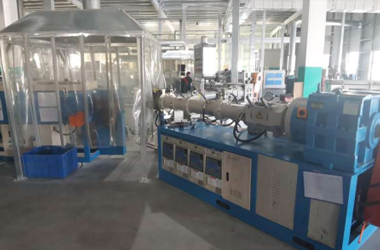Exploring the Benefits and Applications of Edge Tape for Enhancing Wood Projects and Finishes
The Versatility of Edge Tape for Wood A Comprehensive Guide
Edge tape, also known as edge banding, has become an essential element in woodworking and furniture making, providing both aesthetic appeal and practical benefits. Its primary function is to cover the exposed edges of wood panels, particularly engineered wood products like particleboard and MDF (medium-density fiberboard), which lack the natural finish of hardwoods. This article delves into the various types of edge tape for wood, its applications, and advantages, making it a go-to solution for both hobbyists and professional woodworkers alike.
What is Edge Tape?
Edge tape is a strip of material applied to the edges of wood products to enhance their visual appearance and durability. It can be made from a variety of materials, including vinyl, melamine, wood veneer, and even plastic laminate. The choice of edge tape often depends on the specific requirements of the project, such as the type of wood, desired finish, and intended use of the furniture or cabinet.
Types of Edge Tape
1. Wood Veneer Edge Tape This is made from real wood, offering a natural look that closely resembles solid wood. It can be stained or finished to match the surrounding wood, providing a seamless appearance. Wood veneer tape is an excellent choice for high-end furniture and cabinetry.
2. PVC Edge Tape Known for its durability and versatility, PVC edge tape is resistant to moisture, scratches, and chemicals. It comes in various colors and textures and is often used in modern cabinetry and furniture designs. Its flexibility allows for easy application to both straight and curved edges.
3. Melamine Edge Tape Similar to PVC, melamine edge tape is a cost-effective option that comes in a range of colors and finishes. It is typically used for covering particleboard or MDF edges, providing an attractive finish that matches the surface material.
4. Acrylic Edge Tape This type of tape offers a high-gloss finish and is available in vibrant colors and patterns. Acrylic edge tape is often used in contemporary designs that emphasize sleek, modern aesthetics.
Applications of Edge Tape
edge tape for wood

Edge tape is widely used in various woodworking applications
. It is commonly applied to- Cabinetry Kitchen cabinets, bathroom vanities, and storage units often utilize edge tape to provide a finished look and protect the edges from wear and moisture. - Furniture Tables, desks, and shelving units benefit from edge tape, enhancing their appearance while offering durability.
- DIY Projects Hobbyists often incorporate edge tape in their projects to achieve a professional finish without the need for advanced skills in woodworking.
Advantages of Using Edge Tape
1. Protects Edges Edge tape acts as a barrier against wear and tear, protecting the vulnerable edges of wood panels from chipping and damage.
2. Enhances Aesthetics It provides a polished and finished look to furniture and cabinetry, allowing for a cohesive design that aligns with the overall aesthetic.
3. Cost-Effective Solution Utilizing edge tape can be a budget-friendly alternative to solid wood, offering a similar appearance at a fraction of the cost.
4. Easy Application Most edge tapes come with adhesive backing, making them easy to apply with minimal tools, perfect for both novice and experienced woodworkers.
In conclusion, edge tape for wood is an invaluable resource that combines functionality with style. Whether you are enhancing the edges of cabinetry, furniture, or personal projects, edge tape provides durability and a professional appearance. Understanding the various types of edge tape available and their specific applications can help you make informed choices, ultimately elevating the quality of your woodworking projects. As trends continue to evolve in the woodworking industry, edge tape will remain a staple for creating beautiful and functional wood products.
-
Silicone Seal Strip: The Ultimate Solution for Your Sealing NeedNewsNov.01,2024
-
Keep the Heat: The Importance of Seal for Oven DoorsNewsNov.01,2024
-
Essential Guide to Corner Protectors for Your FurnitureNewsNov.01,2024
-
Enhance Your Home with Silicone SolutionsNewsNov.01,2024
-
Efficient Maintenance of Melamine Sealing StripsNewsNov.01,2024
-
Comparison of Different Edge Sealing ProcessesNewsNov.01,2024
-
Types of Door Bottom Seal Strips and Their Best UsesNewsOct.25,2024